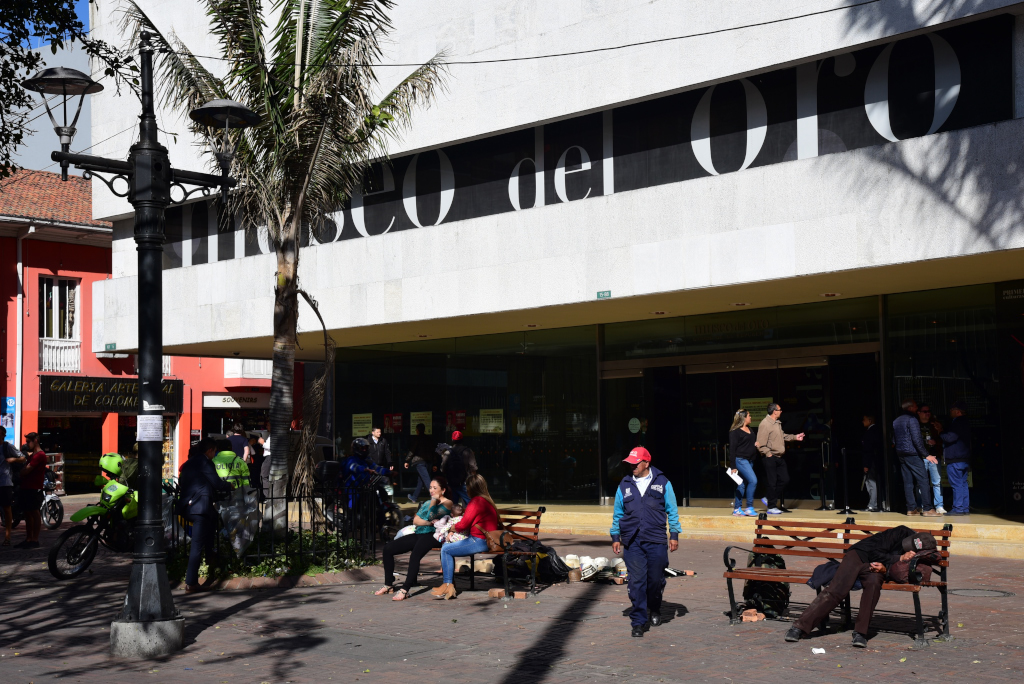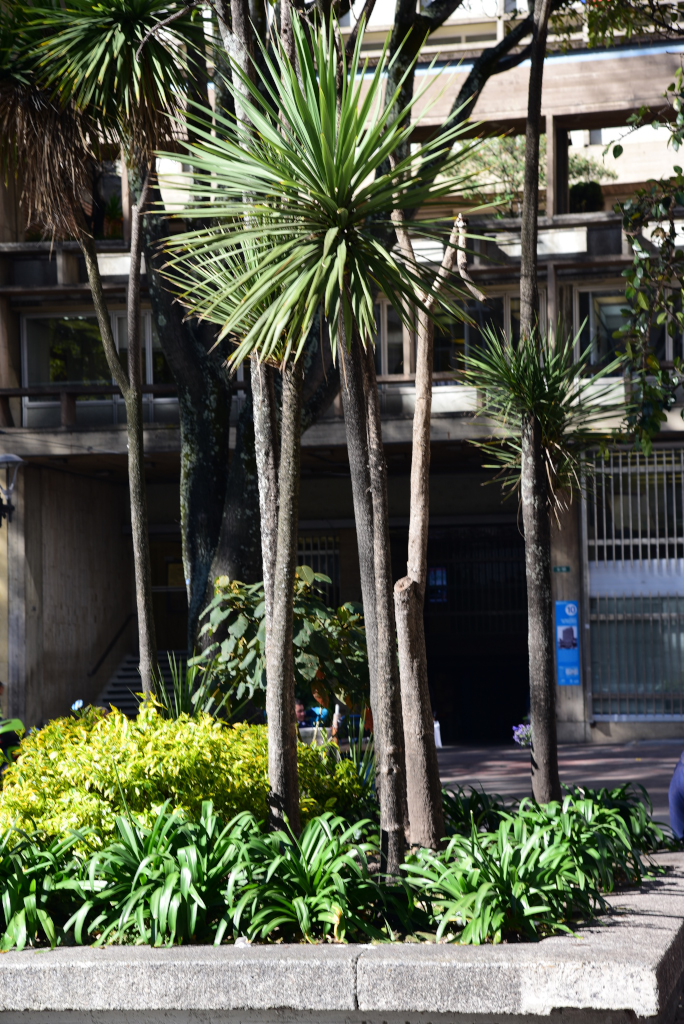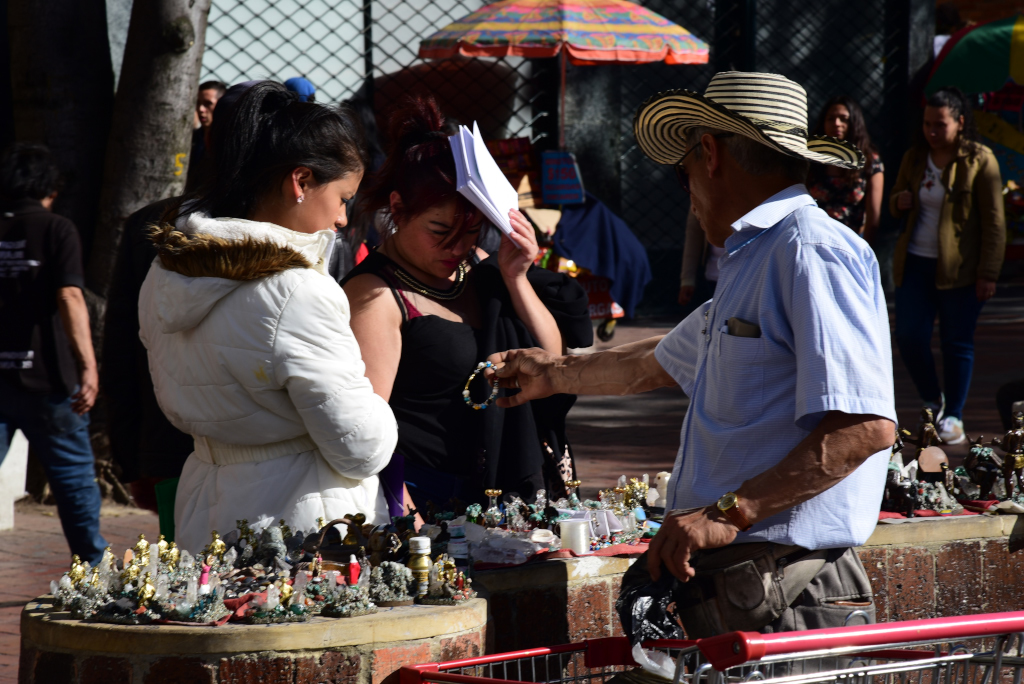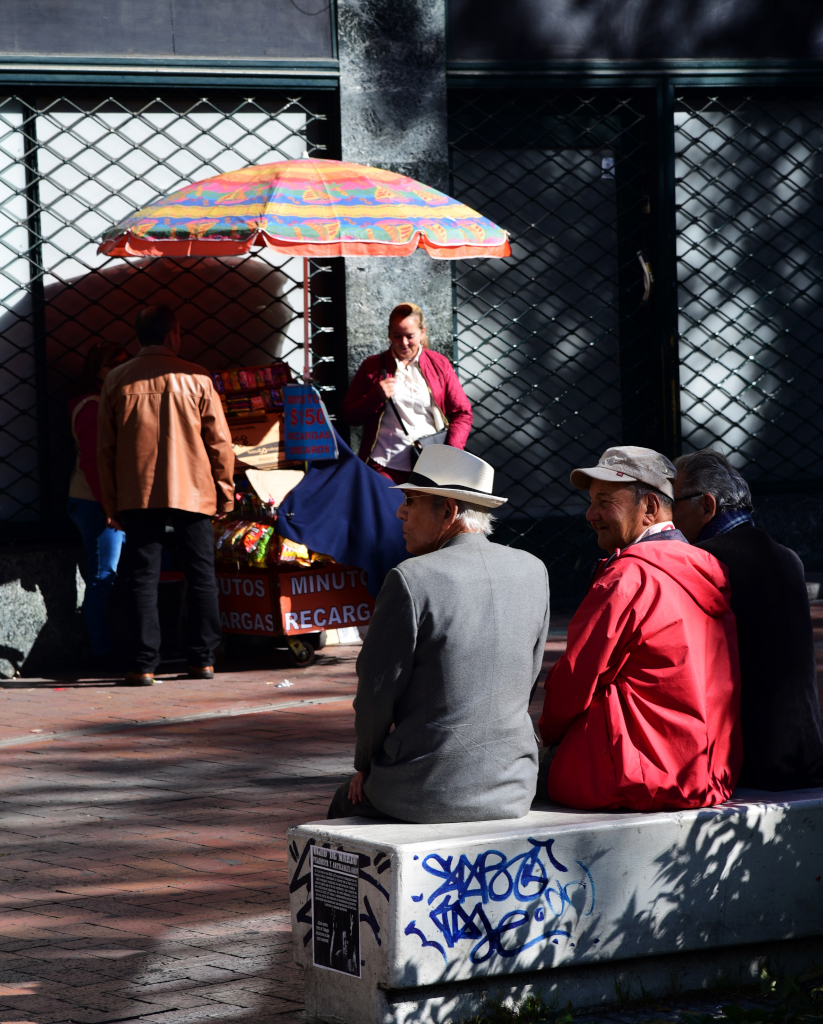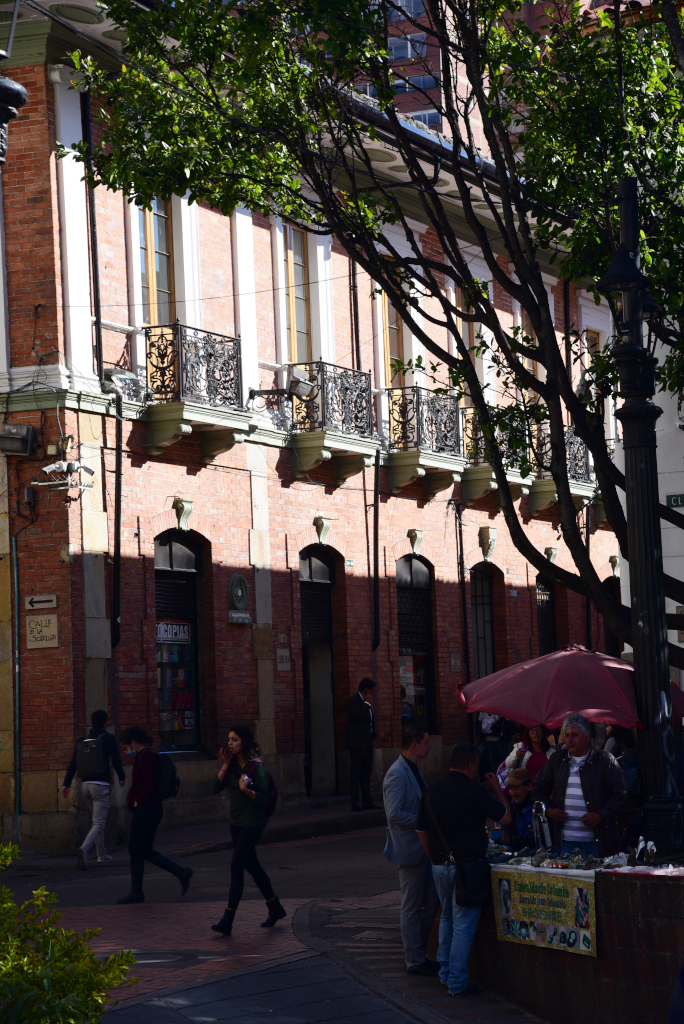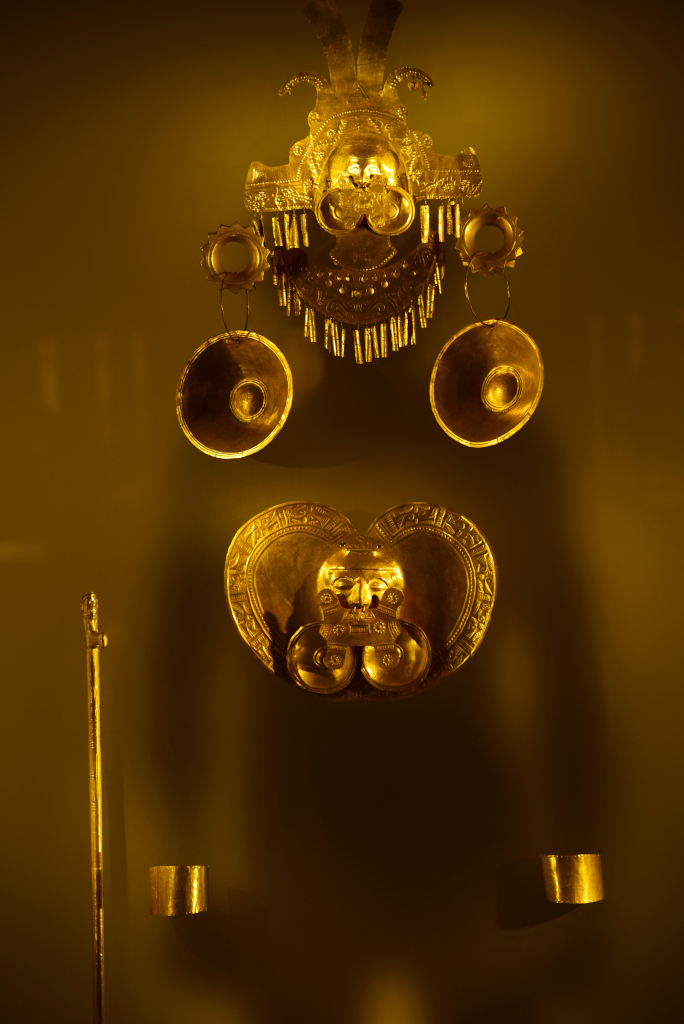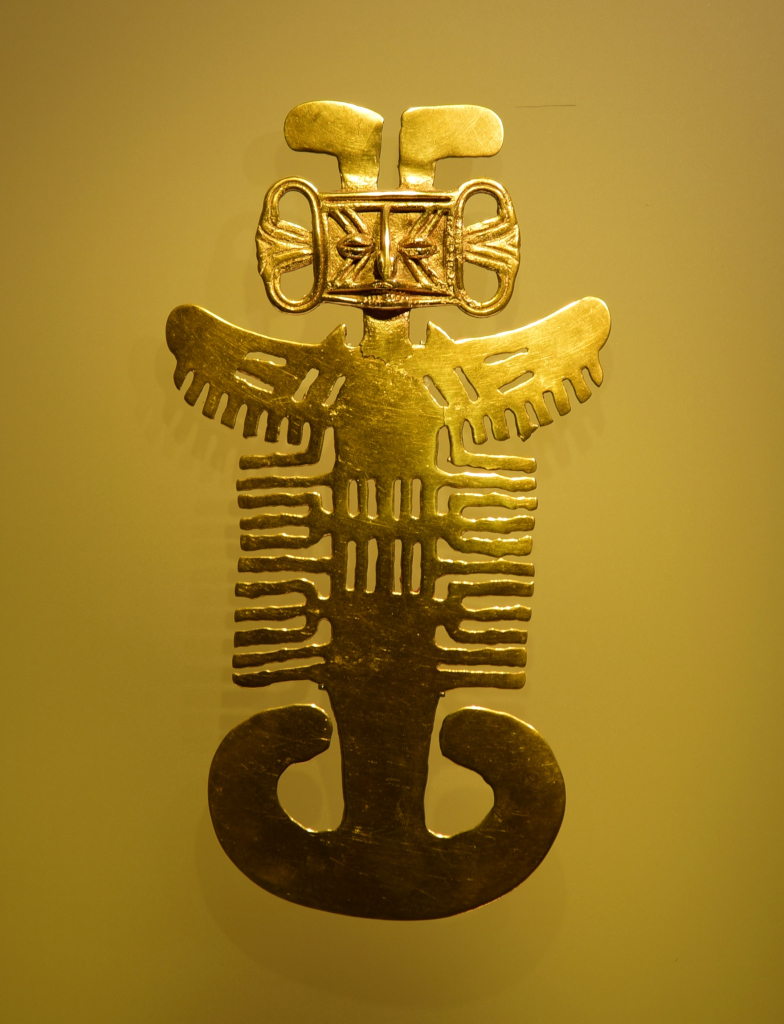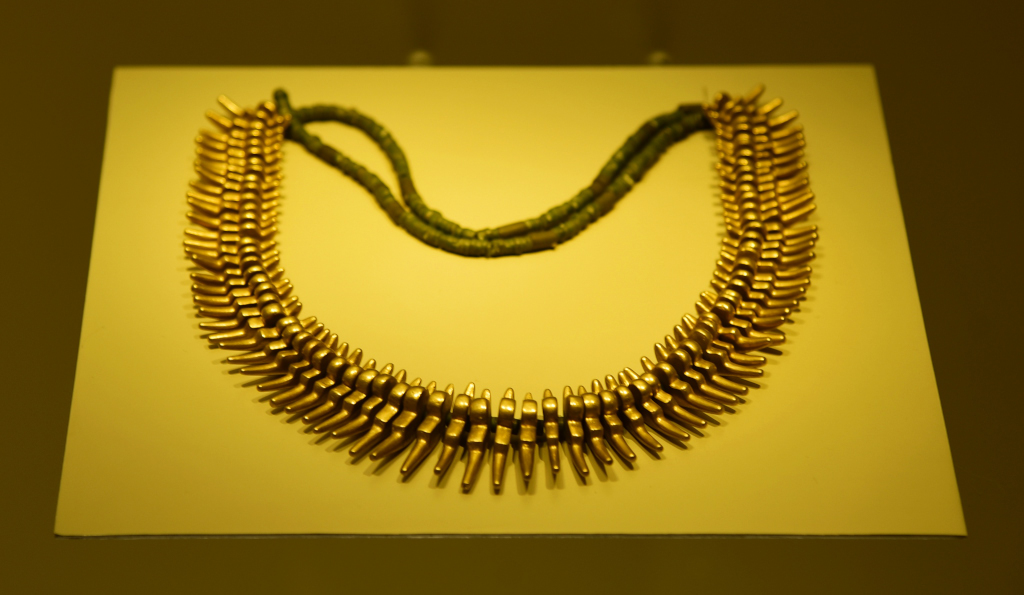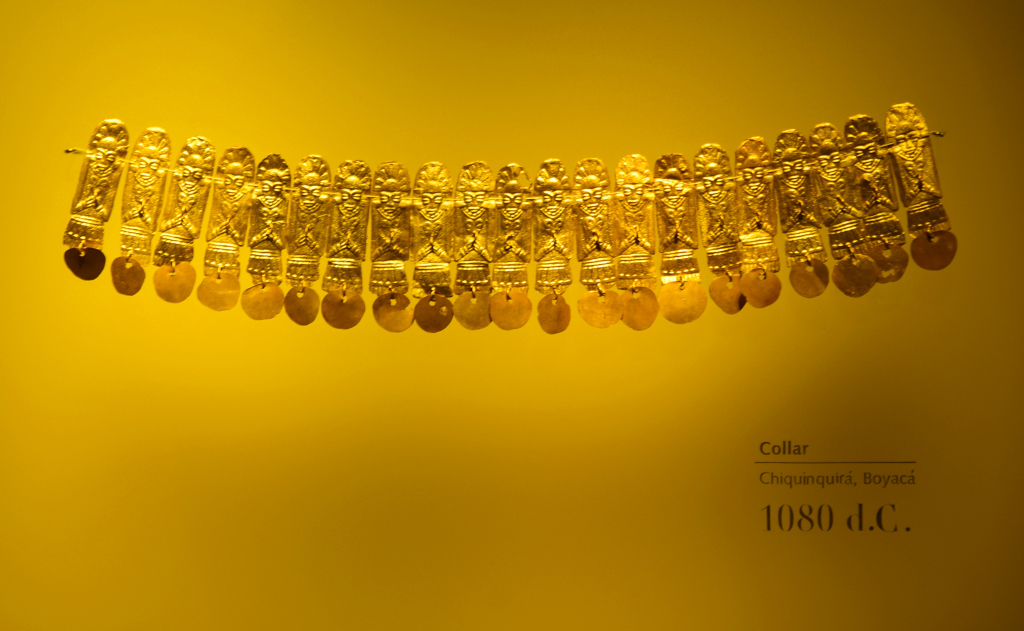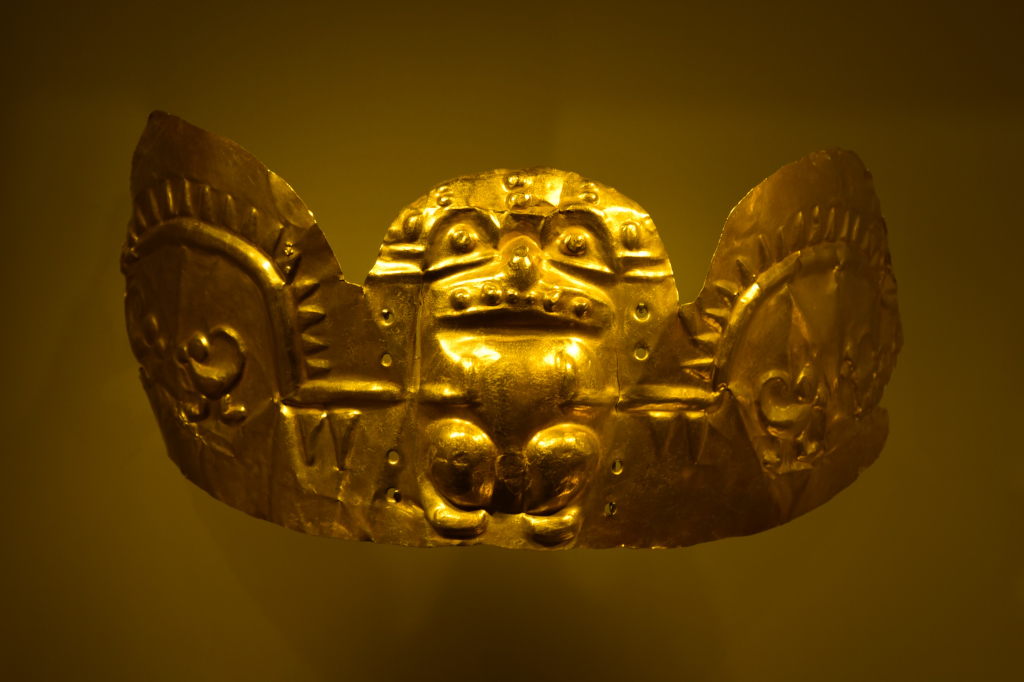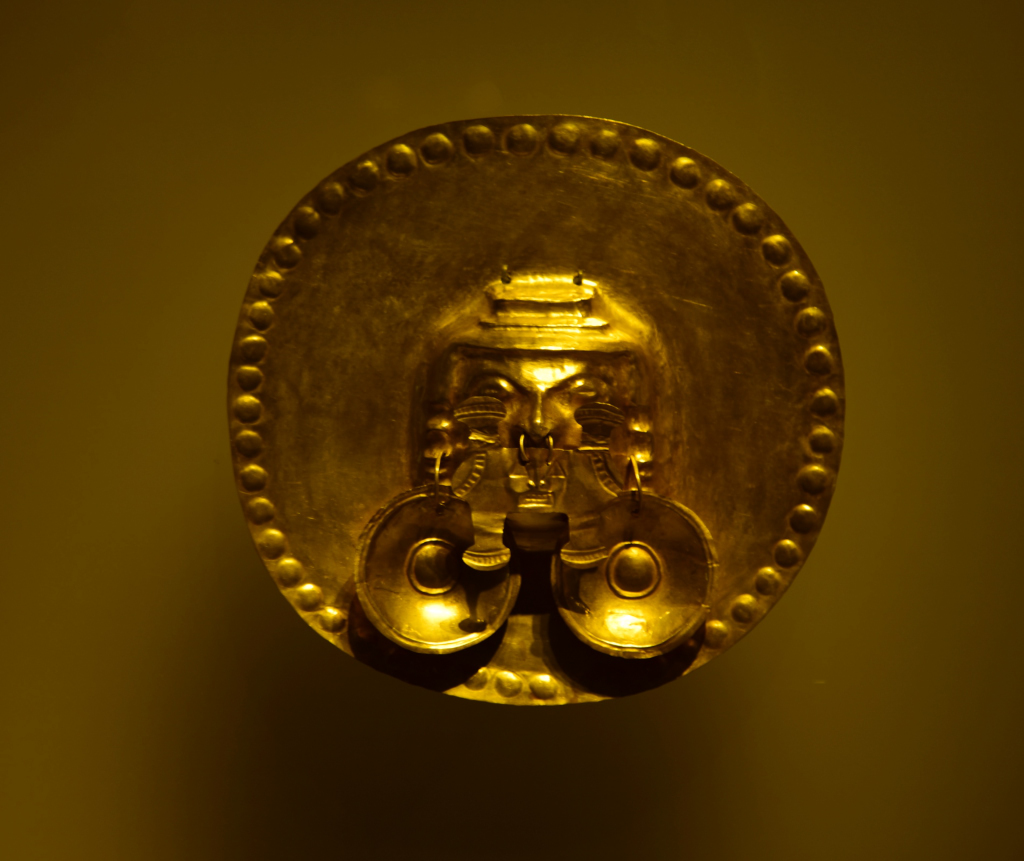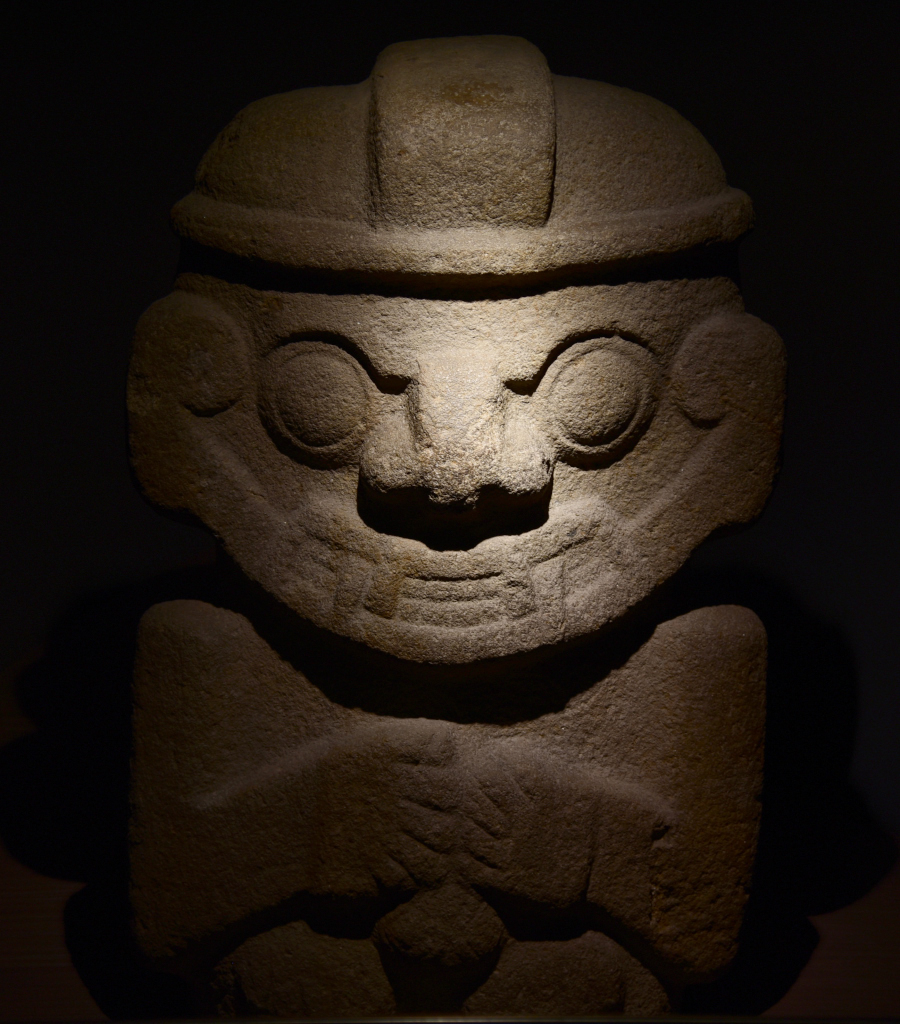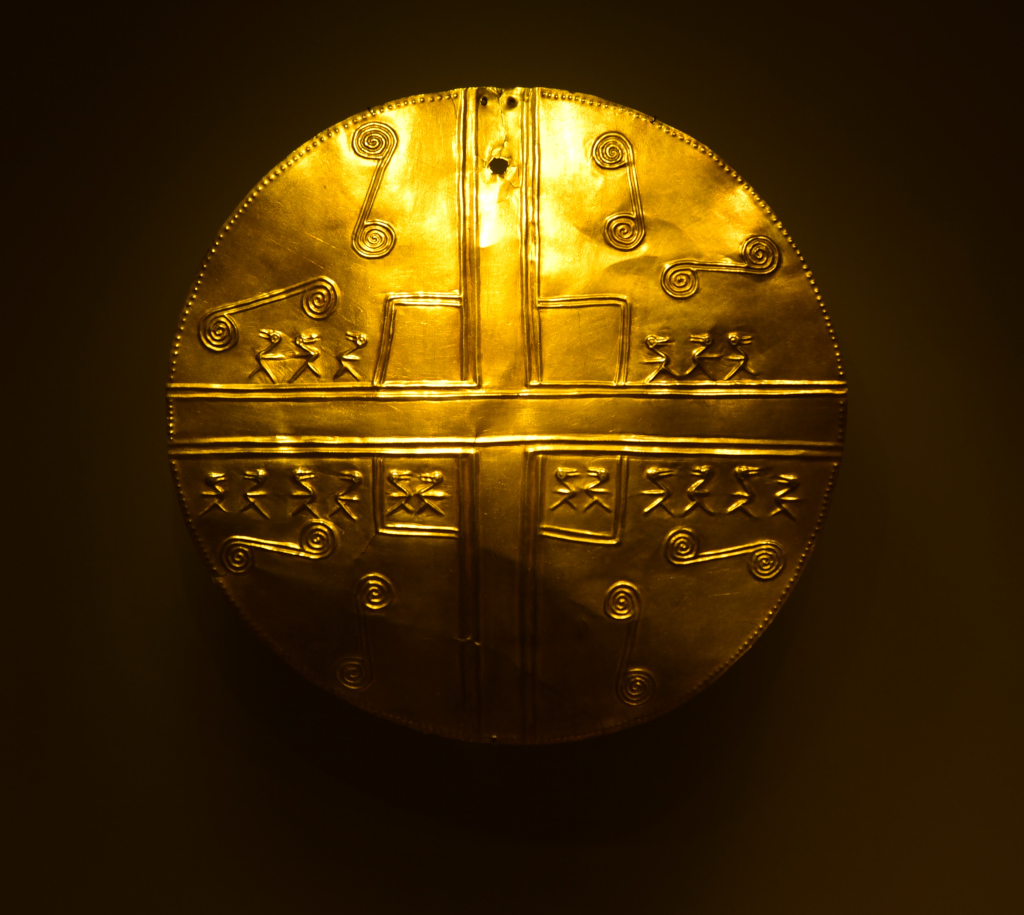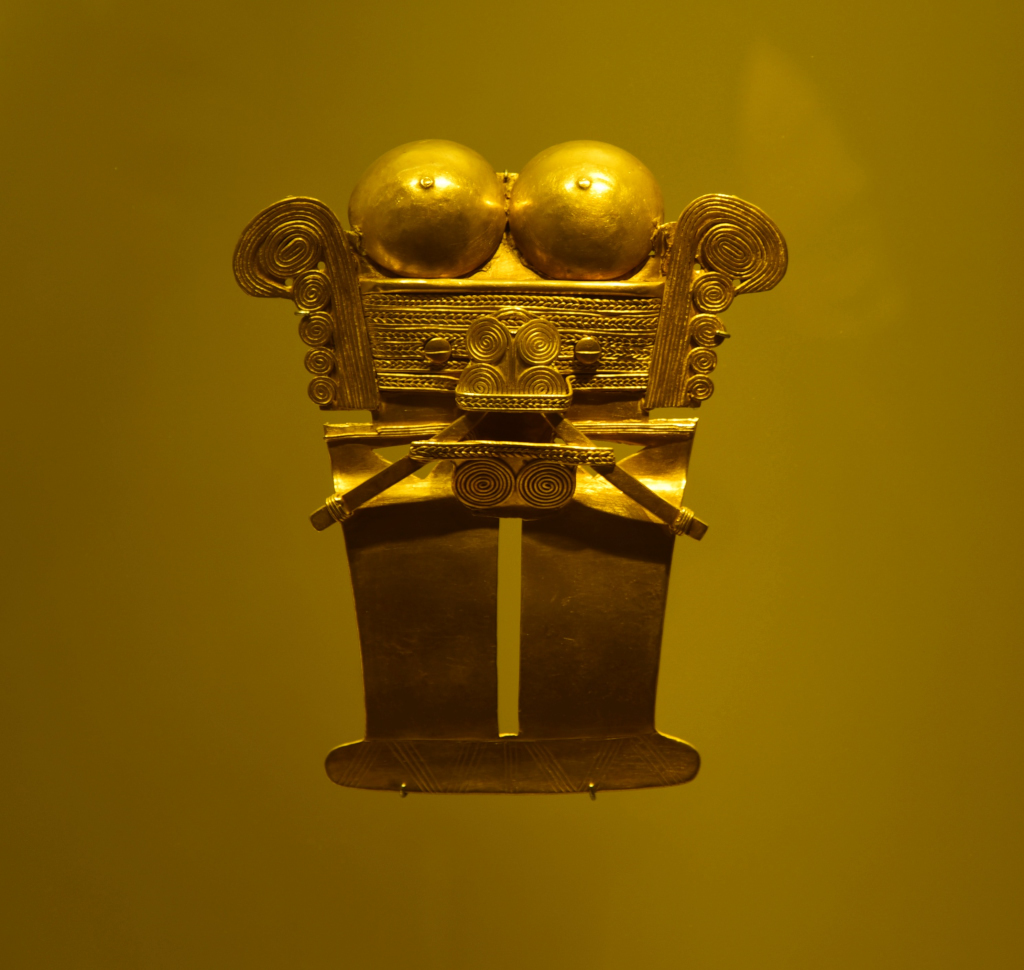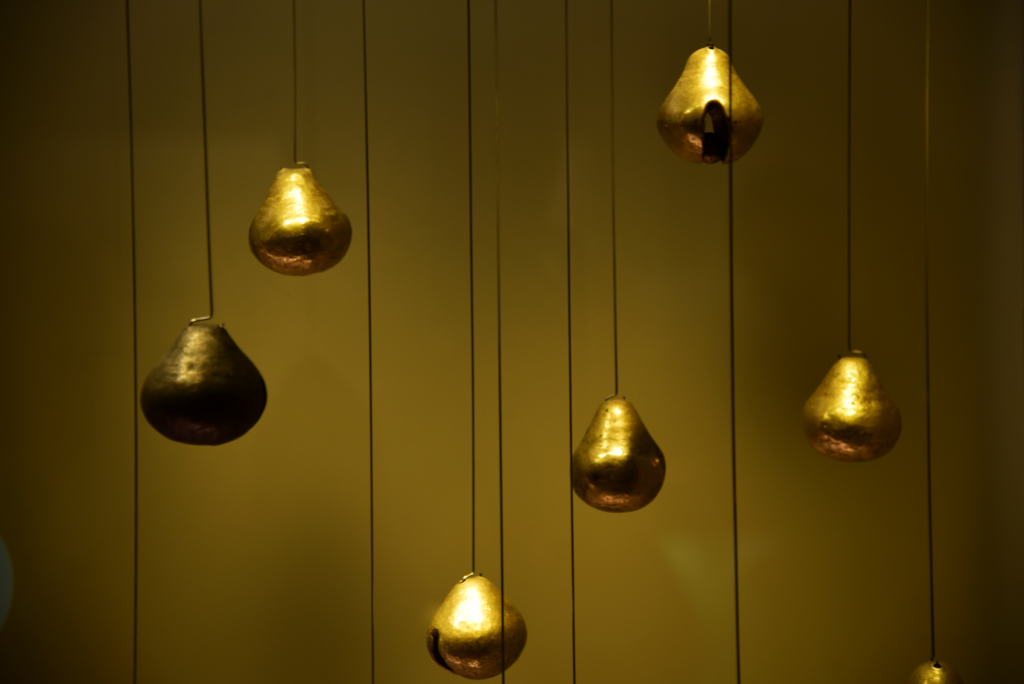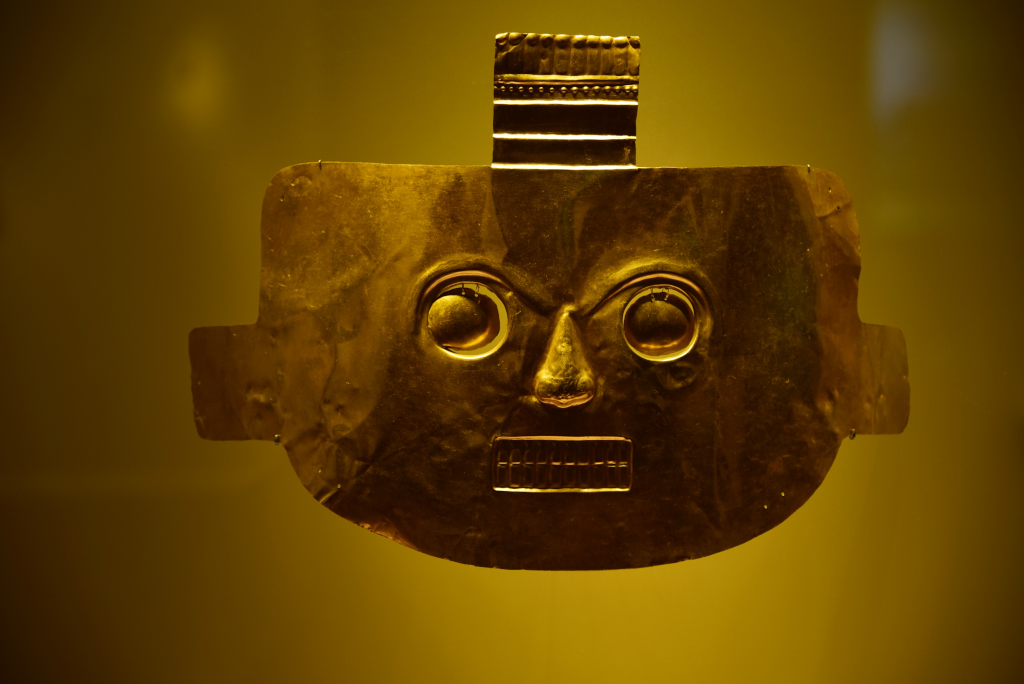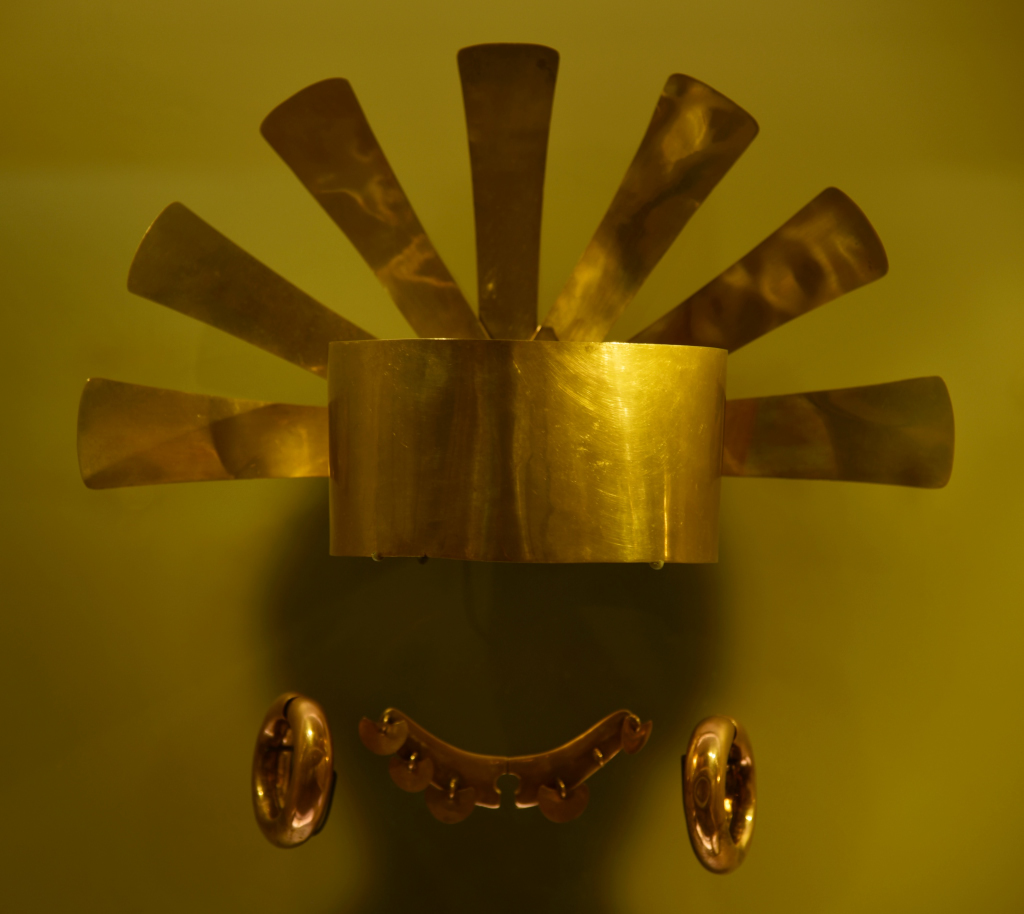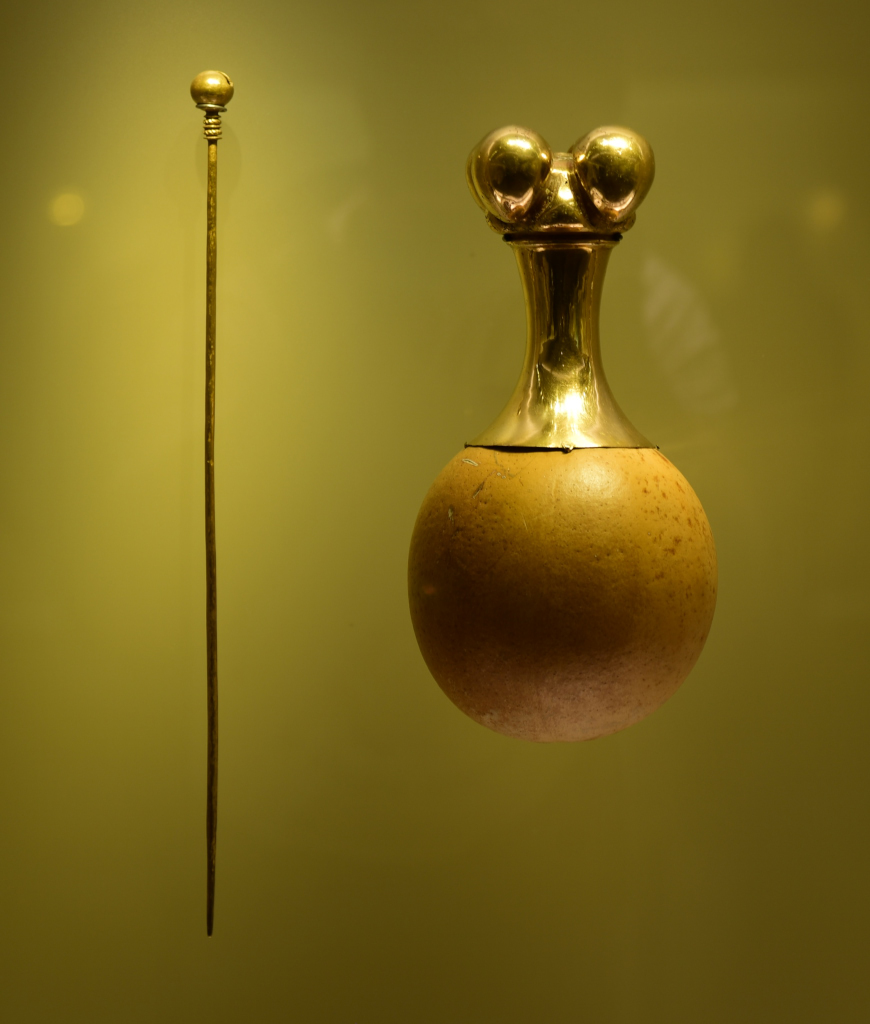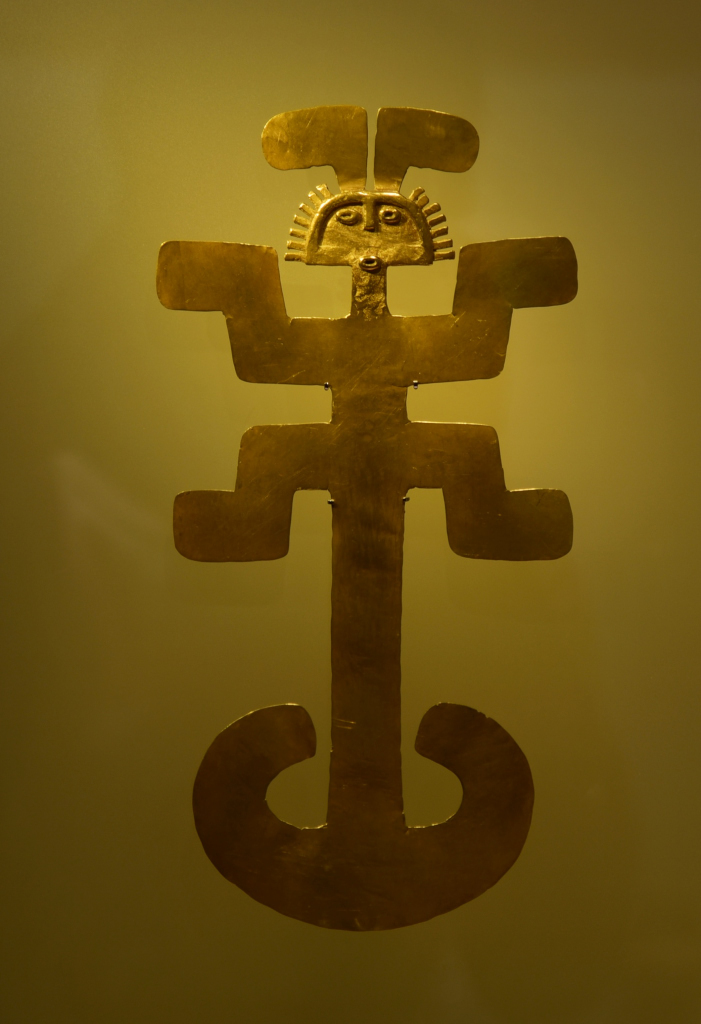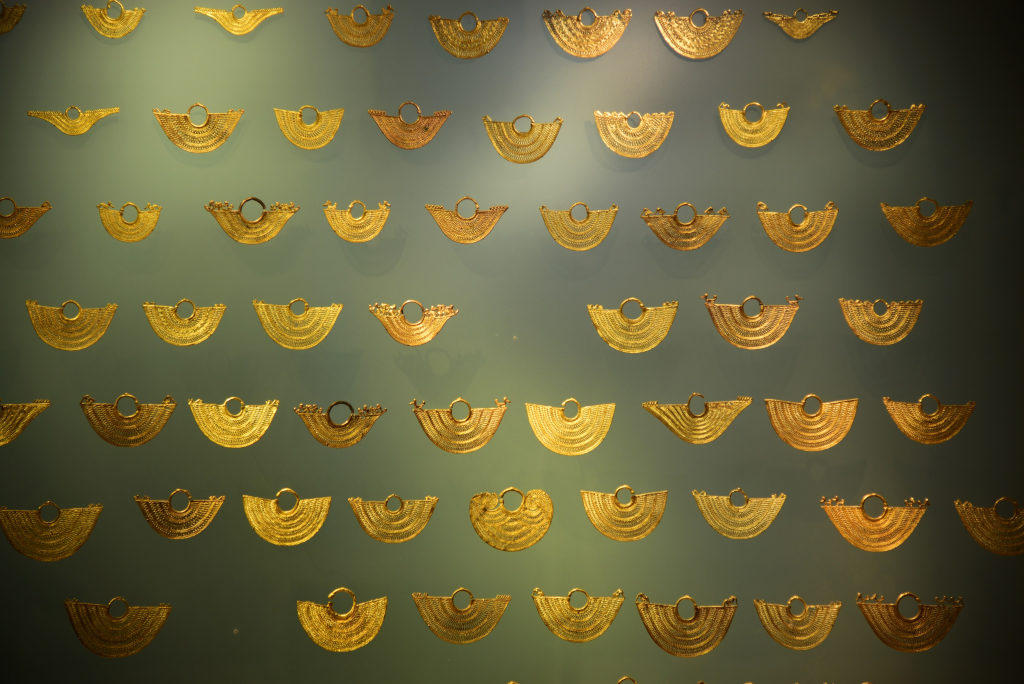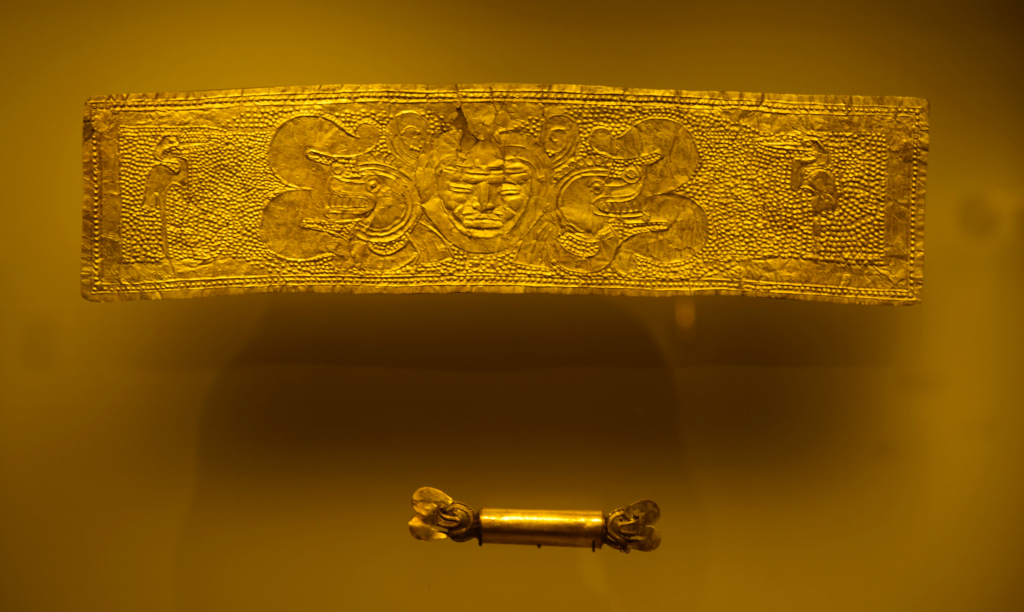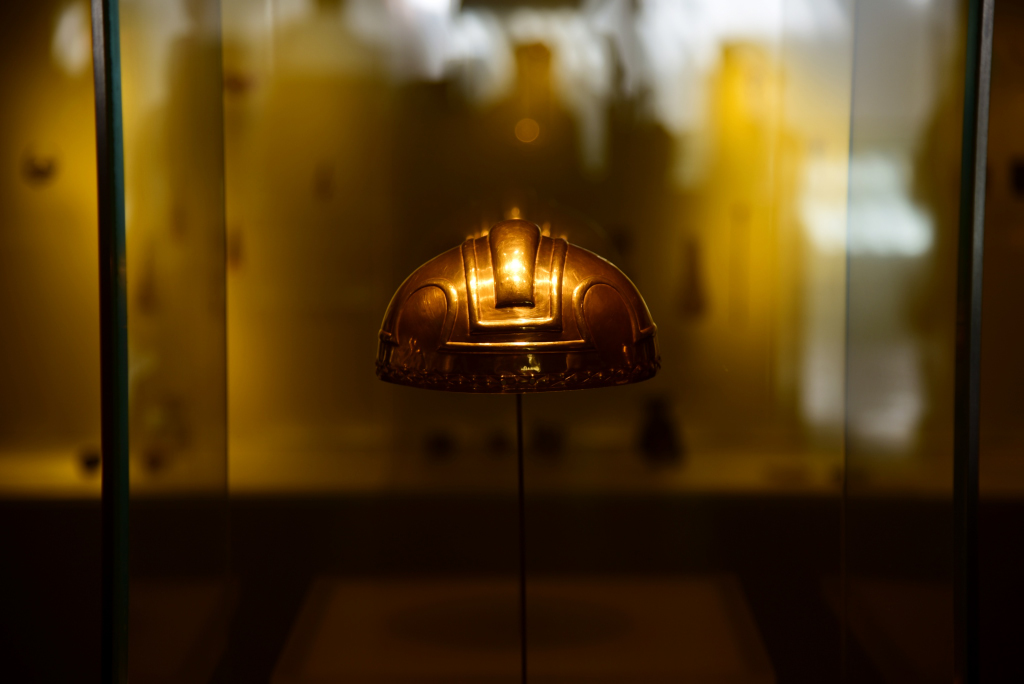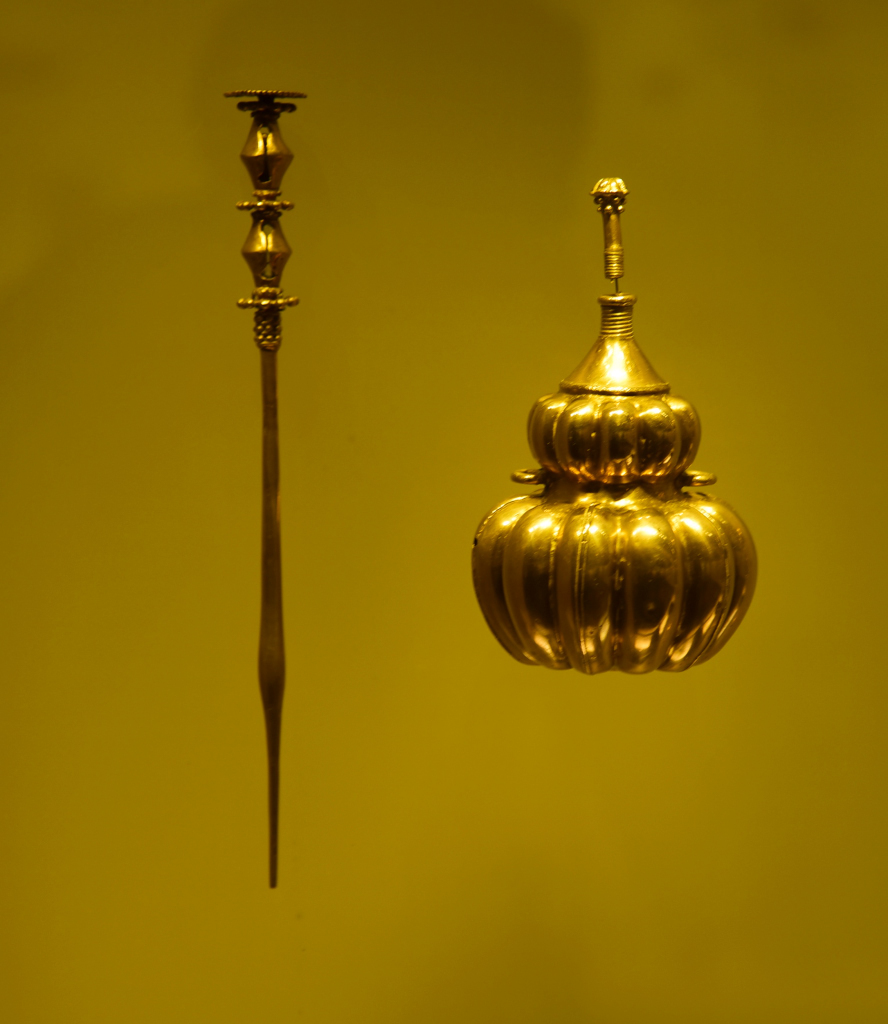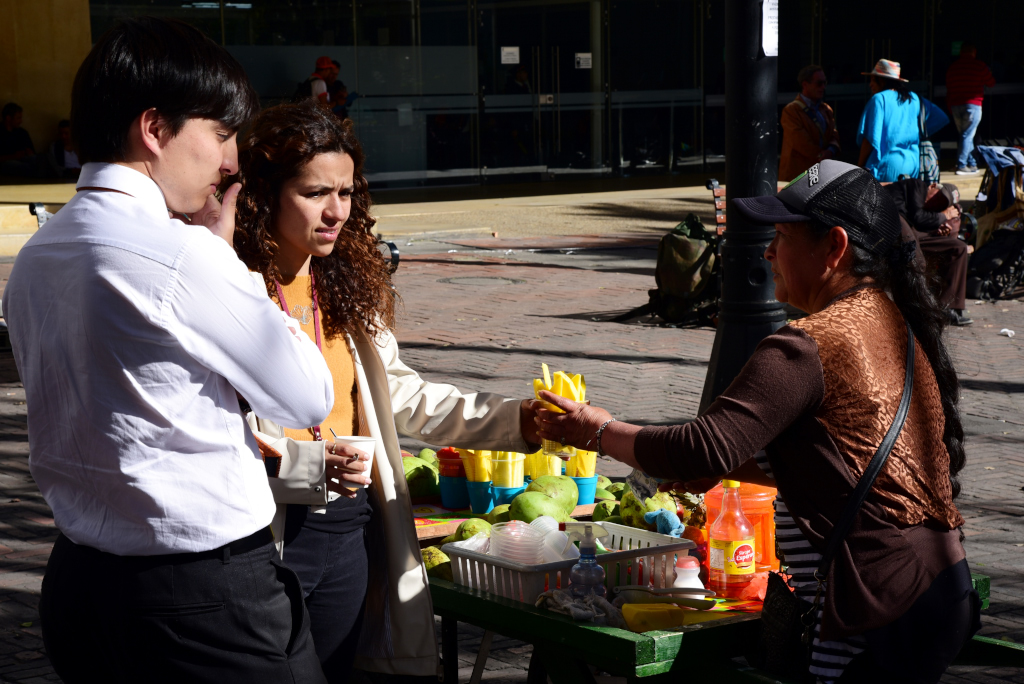March 14, 2018
Today’s task is to take in the Museo del Oro in the Candelaria. Given the amount of time I have managed to spend in Bogotá, it’s about time I did something constructive with my time. Particularly given that I have apparently now learned how to use the TransMilenio, and in fact also acquired a card for the bus system.
The residential buildings on Carrera 4 running north of Calle 72 literally scream privilege, manor houses, posh brick towers, even more patently indulgent and privileged than around Calle 72. And such a far cry from so much of the rest of the country … But the bus downtown represents a jump in a different direction, the scanned card not releasing the turnstyle, the driver at first ignoring me, then telling me to climb underneath the turnstyle. Seriously dude? Where did you pick up your public relation skills?
The image of motivation, I stride purposefully from the San Victorino station up towards the Museo del Oro along the streets laden with pedestrians and flanked with retail and office spaces – but there are no coffee shops. You would think the plaza on which the museum is situated would have cafés! But no, it doesn’t. The streets ranging from Calle 3 where the TM runs up to the blocks above the Museo d’Oro are expansive, largely pedestrian boulevards that concentrate the city’s most prestigious retail businesses, the adjacent streets radiating further into Candelaria much more narrow, beholden to small retail establishments and restaurants, the air absolutely pungent with the stench of grease.
The lower Candelaria is alive with crowds, but the narrow streets and very narrow sidewalks make it laborious to navigate. Endless small eateries offering almuerzos for the day from which the stench of grease emanates – but no dedicated coffee shops are visible. For all the cafes in the Zona G, the fact that there is virtually nothing in the busiest part of the Candelaria leaves me truly perplexed. Bogotá never fails to surprise me …
And yet there is one thing about Candelaria that is evocative of the Latin American city from the days of yore, and that is the preponderance of traditional businesses, physical establishments that seem as if they haven’t been renovated in generations, the buildings and exterior environment similar relics, a sensibility that the rest of the city doesn’t share. The retail & commercial part of Candelaria reminds me in fact of Old Madrid, although Madrid simply has much more class.
The plaza in front of the Museo del Oro is somewhat of a catchment area for tourists, touts, police, ambulatory vendors of snacks, the atmosphere both relaxed and laden with expectation, few seeming to have a sense of certainty as to what they should be doing, and in that sense disconnected from the relentless commercial pace of the area of the lower Candelaria.
The museum has an almost tomblike air, the ancient golden masks and objects of veneration displayed in glass cases on three floors in the partial darkness, the bottom floor dedicated to a small and overpriced café and a craft store. The café is the only option in the area for coffee, and the latter flogging items that are also largely not available anywhere else.
The shop has very unique jewelry made from gold and silver, inspired by pre-Colombian objects and indigenous crafts of the highest caliber and even higher prices. The museum would be a hushed setting if it weren’t for the hordes of mostly foreigners, the wave of tourism hitting Bogota in full evidence at this premiere attraction. Local families with loud children in tow certainly make the environment even less meditative, but not to the point of making the visit unbearable.
The museum is quite astonishing, in terms of the singular focus on the use of gold in the expression of pre-Colombian cultures in Colombia. The processes for crafting gold and other precious metals as used by the pre-Colombian peoples is described in detail, as well as the rationale for its use. Gold was isolated, in alloy form so as to facilitate elaboration, heated and pounded into shape in a sequence of iterations, then embellished and polished using specialized tools.
Where minerals occurred, the values ascribed to gold, and the lure of gold to the conquistadores is also elaborated on, a lure that was decisive in devastating the indigenous cultures upon the arrival of the Spanish and setting the continent on an entirely different and quite bloodied direction over the ensuing centuries.
Objects are arranged either individually, or in groupings, particularly when the objects are simpler and smaller, and illuminated by the light of a single spotlight. The manner in which the objects are displayed lends to the visual power of the objects themselves, constructed according to simple lines, but in a way that is powerful, particularly considering the material they are constructed with.
One part of the building is dedicated to displays by pre-Colombian ethnic groups, while the rest to displays by subject area. It seems that every region of the country was involved in the creation of sophisticated gold artifacts from the earliest times, although the specific chronology would be tied to the years the civilizations would have experienced their apogee. Given the span of time, dating back many thousands of years into the past, there must have been substantial cross-pollination of cultures prior to the arrival of the Spanish.
And yet each culture had its unique forms of expression, even if that expression occurred in similar contexts. Some cultures produced work that was complex, others work that was simple, if not stark, and yet nonetheless with their unique imprimatur and elegance. The degree of finesse is quite astonishing in some cases, especially considering the age of the civilizations represented.
Finery is displayed that would have been worn by priests or aristocrats, including helmets or crowns, armbands, chest plates and scepters. The representations of the gold pieces implicitly describe aspects of the cultures and the manner in which they lived, including pendants, brooches, ear pieces, and so on.
The aesthetics presented in the objects are interesting, in terms of the relationship between symmetry and asymmetry, the size and depth of the objects, their simplicity or complexity, and the nature of the decoration the objects sustained. Riveting are the necklaces constructed from a continuous sequence of identically-crafted components, with substantial detailing, that would have been found in various cultures in the region.
Gods and spirits are represented in some pieces, others featuring symbology that would facilitate in the veneration of spirits or gods. Pieces also feature imagery that would provide powers to shamans, or support in the performance of specific shamanic rituals.
Masks ranging from the simple to the elaborate are presented, intended to give the bearer prestige, power, or a transformational spiritual experience.
Many objects displayed are not only of gold, but also ceramic, serving to underline the pre-Colombian cultures’ use of gold for purposes of veneration of spirits, the aristocratic classes, or cosmological investigation. Individual items are documented in terms of their specific use as well as the broader context in which they were used. The nature of the narrative presented in both Spanish and English is at once simple and yet also quite sophisticated, establishing a multi-layered discourse that weaves through the entire museum.
It is possible to take photos in the museum, but without flash. Using flash here wouldn’t just be debilitating for the works, but would also be very distracting for the viewers, given the amount of visitors here today. And the flash would only serve to wash out the images. Fortunately, the lighting in the display cases is just enough to produce some decent quality photos, thanks to having – or deluding myself that I have – a camera with a high-end sensor …
I am surprised how little security there seems to be in the museum. There is relatively little personnel, even at the entrance. And the entire front of the building is glass. I see people approaching the display cases closely, so there are obviously no sensors detecting movement. The display room on the top floor is located inside a large vault, evidenced by the heavy doors we pass through. Perhaps I missed the manner in which other rooms are secured, but surely there must be more to securing the place than meets the eye.
I would love to get another coffee following the visit to the museum, which results in an even lengthier episode of stumbling in the streets around the lower Candelaria and finding absolutely nothing other than the tiny retail establishments that litter the claustrophobic area and of course the innumerable small eateries that may be very inexpensive, but emanate a degree of greasy odours that make the idea of spending any time inside fairly reprehensible.
About to head back to the TransMilenio, I stumble upon a small passage inside an old building, with a few quaint shops, an Oma outlet, and at the back, surprise of all surprises, a bakery and cafe run by an ambivalent young Frenchman who makes the most amazing and authentic pastries, and also serves an excellent coffee. But no, he is not ready for the vagaries of Tripadvisor …


